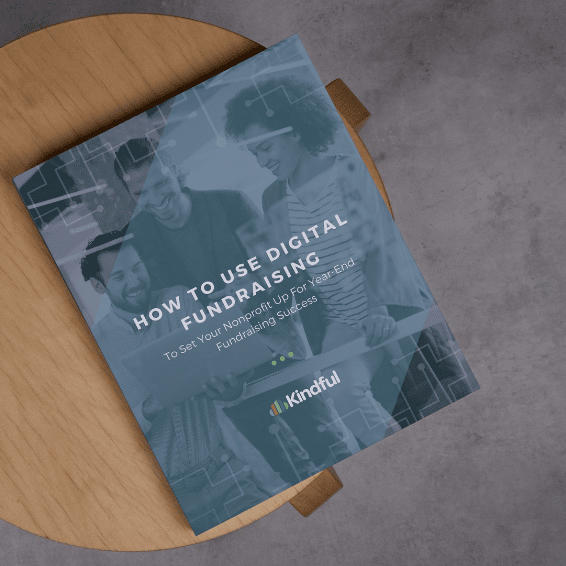8 Steps to Build a Successful Year-End Giving Campaign

There are many factors that drive end of year donations including, donors’ desire to help others during the holidays, feel like making a difference, and take advantage of charitable deductions. A strategic year-end giving campaign can help you take advantage of this surge in donations and reach your annual fundraising goal.
The earlier you start planning, the more effective your campaign will be.
Here are eight steps to help you get started with your year-end giving campaign.
1. Set Your Goals
Goal setting is an important first step in building any fundraising campaign. Whether you want to increase your funds raised from last December by 5%, find 100 new supporters, or recruit 50 new recurring donors, your goals will guide your work.
When you set specific, attainable goals, you can embed these goals into your campaign, showing your donors how close or far you are from hitting them. This will motivate your team and your donors, provide you with content for your communication calendar (updates!) and focus your branding and outreach.
2. Brand Your Specific Year-End Giving Campaign
Good branding helps nonprofits in many ways. Not only does your nonprofit need strong, memorable branding, so do your giving campaigns.
Create a name for this year’s end-of-year campaign that succinctly conveys your intent and then build out content around it. Make sure everything in your campaign has a consistent tone, uses vivid imagery, and is driven by powerful storytelling.
3. Segment Your Donors
It’s always important to use your donor management platform to segment your donors to help personalize your communication. Use segmentation to make the right ask, on the right platform, with the right messenger.
4. Create An Editorial Calendar
Leading into the end of the year, you will reach out to your donors many times in many ways. Design an integrated editorial calendar that uses consistent messaging across all channels—email, direct mail, social media, and your blog.
Consider having weekly themes for your outreach that all build towards your end of year goals. Perhaps you can do a weekly spotlight of a beneficiary of your organization, share monthly fundraising updates, or send out new emails every time you hit a certain milestone on the way to your goals.
Remember to always tell stories throughout all communications and to avoid always asking of your donors without sharing inspiration.
5. Launch An End-of-Year Peer-To-Peer Fundraising Campaign
Statistics on giving show that some people are more likely to give when asked in front of others. Peer-to-peer fundraising is effective because it leverages positive peer pressure and the networks of a nonprofit’s supporters to raise awareness and funds for their cause. Though it takes some focus to get started, you’ll might be surprised at how simple it is to execute an effective peer-to-peer fundraising campaign that will multiply your funds at the end of the year.
6. Make It Easy To Give
As always, the easier it is to give, the more likely people will give. Remove all barriers to giving and expand the ways you can receive donations. Think about who likes to give where and include this knowledge in your segmentation.
Supporters should never have to look too hard to find a way to donate to you, but especially going into the end of the year, make sure your donate buttons are front and center. With the right tools, you can make giving easy and convenient.
7. Make The Most Of #GivingTuesday
Many organizations use #GivingTuesday to officially launch their year-end giving campaigns. Strategically participating in #GivingTuesday will widen your audience and increase your engagement.
This day of viral giving can launch your end of year fundraising with a huge boost of energy and support, so make sure you’re including it in your planning.
8. Say Thank You And Share An Impact Report
Donors want to hear how their donation is making a difference and they need to be recognized for their contribution. Make sure your year-end giving plan doesn’t stop on December 31 but includes steps to adequately thank your donors. Something like a simple thank you video will go a long way.
Keep track of the donations received as part of your year-end giving campaign so you can create an impact report and share it with everyone who participated. When donors feel appreciated and see what their gift helped accomplish, they’ll be more likely to give to your organization in the future.
With these steps, your team can create a successful year-end giving campaign that helps you reach and even surpass your most important goals. Get started today to ensure you’re ready to go!
Don’t forget that the last two days of the year are the biggest giving days! Based on data from Kindful, December 30 and 31 produce 567% and 1,212% more revenue than non-giving days. That’s 2.4 times more revenue than GivingTuesday! So while it’s a good idea to participate in GivingTuesday, don’t sleep on the final two days of the year!
Free eBook: How To Use Digital Fundraising To Set Your Nonprofit Up For Year-End Fundraising Success

Organizations that have the tools in place to easily accept donations online, run virtual events, and participate in online fundraising campaigns have been able to take advantage of this unique year. In this eBook, we’ll help you set a strong fundraising foundation that will leave you feeling confident in your digital fundraising abilities. We’ll also share insights from nonprofits so you can learn from real-life situations.
Schedule a live demo with our partner Bloomerang, and we’ll show you how easy it is to create and automate reports, utilize online and offline fundraising tools, quickly integrate and access all your data, and ultimately create more time to engage your donors.